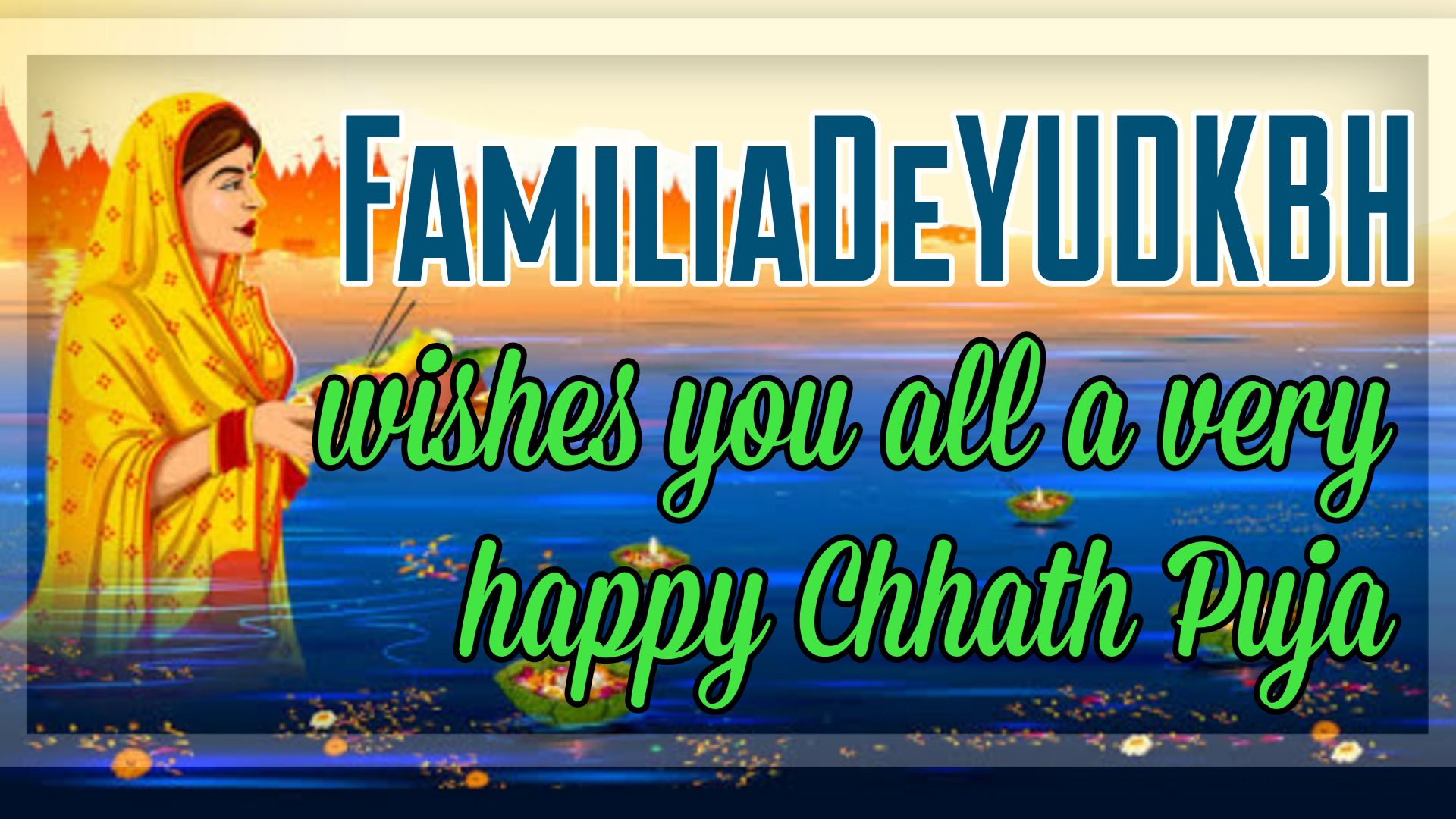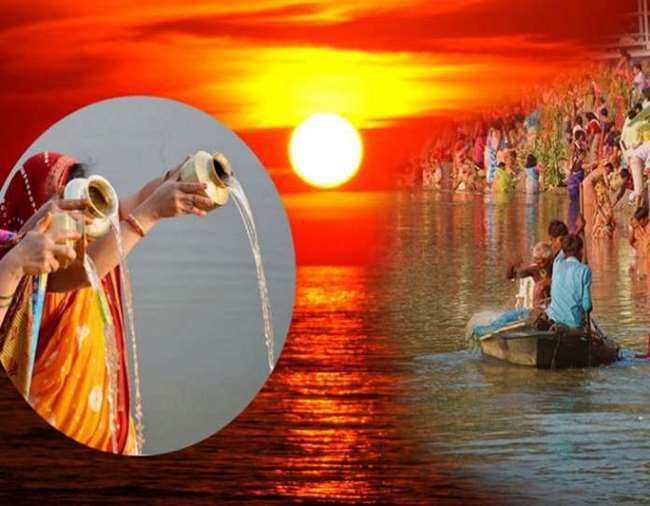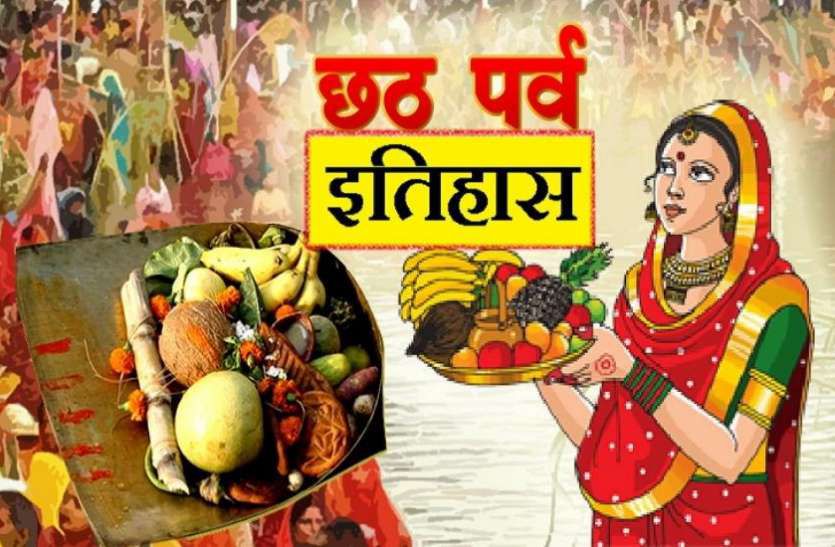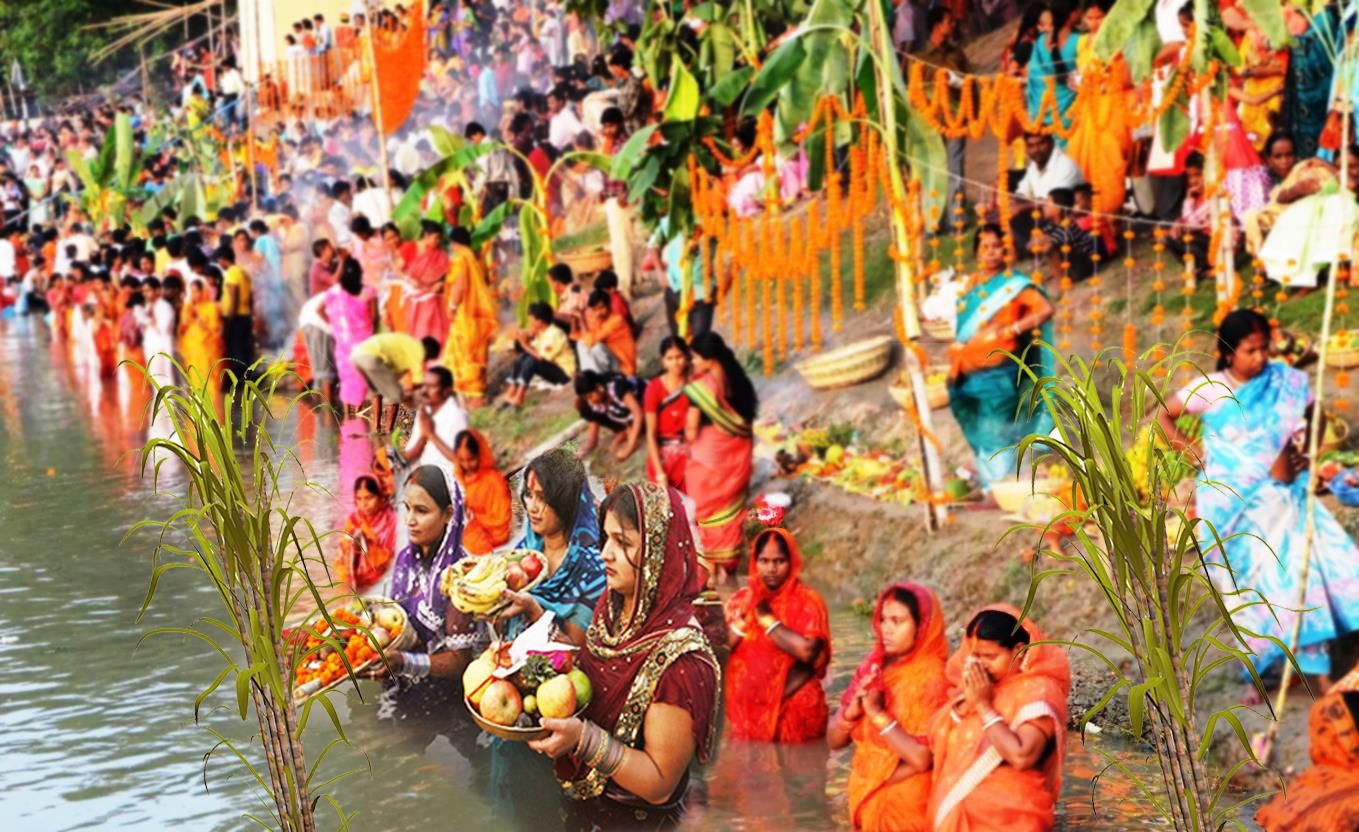
☀️ 𝑪𝒉𝒉𝒂𝒕𝒉 𝑷𝒖𝒋𝒂 ☀️

~ 🄽🄾🅅🄴🄼🄱🄴🅁 10, 2021 ~
"Dilo me ho sabke dher saara pyaar,
Chhath Puja laaye aapki zindagi mein khushiyan apaar...
Muradein ho puri sabki Chhath Maiyaa ke haath,
Mubarak ho aap sabko yeh chatt ka Pavan tyohaar."
Chhath is an ancient Hindu Vedic festival, historically native to the Indian subcontinent, more specifically, the Indian states of Bihar, eastern Uttar Pradesh and Jharkhand and the southern parts of Nepal. Prayers during Chhath Puja are dedicated to the solar deity, Surya, to show gratitude and thankfulness for bestowing the bounties of life on earth and to request the granting of certain wishes.
Chhathi Maiya, the mother goddess and the Sun's sister, is worshipped as the Goddess of the festival. According to Vedic astrology, Chhathi Maiya or Chhathi Mata protects the offspring and provides longevity to them. It is celebrated six days after Diwali, on the sixth day of the lunar month of Karthika (October-November) in the Hindu calendar Vikram Samvat. The rituals are observed over four days. They include holy bathing, fasting and abstaining from drinking water, standing in water, and offering prasad and arghya to the setting and rising sun. Some devotees also perform a prostration march as they head for the river banks.

Environmentalists have claimed that the festival of Chhath is one of the most eco-friendly religious festivals. Moreover, it's arguably one of the very few Hindu festivals that transcend the caste system which emerged in the post-Vedic period. All devotees prepare similar prasada and offerings. Although the festival is observed most elaborately in the southern region of Nepal and the Indian states of Bihar, Uttar Pradesh and Jharkhand, it is also prevalent in areas where the migrants from those areas have a presence. It is celebrated in all the northern regions and major northern urban centers in India. Hundreds and thousands of people celebrate it in Mumbai as well.
In the Hindu religion, the Shashthi Devi has also been known as Manas, Daughter of Brahma. In the Puranas, she is also said to be the mother Katyayani, who is worshipped on Navratri on the Shashti date. Shashthi Devi is said to be Chhath Maiya in the local language of Bihar. However, there is no evidence of celebrating Chhath Puja in the holy Vedas. Therefore, it is not a scripture-based practice. And infact, according to the Bhagavad Gita Adhyay 6 Shlok 16, fasting is incorrect.
As per legends, Chhath Puja is being performed from the early Vedic period by sages who would fast for days and perform the puja with mantras from Rigveda. It is believed that Chhath Puja was also performed by Karna, the son of Lord Surya and the king of Anga Desh, which is the modern-day Bhagalpur in Bihar. According to another legend, Pandavas and Draupadi also performed the Puja to overcome obstacles in their lives and gain their lost kingdom.

Chaitra Chhath, distinctly known as "Chaiti Chhath" is observed in the Chaitra month of Vikram Samvat.
Kartik Chhath, popularly called "Chhath" is celebrated at a very large scale in the Kartika month of Vikram Samvat.
Chhath Puja is a folk festival that lasts four days. It starts with Kartik Shukla Chaturthi and ends with Kartik Shukla Saptami.
Nahaye Khaye
(Day 1)
This is the first day of Chhath Puja. This means that after bathing, the house is cleaned and food, after keeping in front of God, is eaten to protect the mind from vengeful tendencies.
Rasiaav- Roti/Kharna/Lohanda
(Day 2)
Rasiaav-Roti is the second day of Chhath Puja. On this day, the devotees are not allowed to drink even a single drop of water. In the evening, they can eat gur ki kheer (Kheer made up of jaggery) called as Rasiaav, fruits and chapati.
Sandhya Arghya
(Day 3)
On the third day of Chhath puja, an arghya is offered to the Sun God during the Kartik Shukla Shashthi. In the evening, a bamboo basket is decorated with fruits, thekua and rice laddus, after which devotees offer an arghya to the sun with their families. At the time of arghya, water and milk is offered to Sun God and the Chhathi Maiya is worshipped from a scoop filled with prasad. After the worship of the Sun God, Shashthi Devi songs are sung in the night and the vrat katha is heard. This day is spent preparing the prasad at home. On the eve of this day, the entire household accompanies the vratins to a riverbank, pond or a common large water body to make the offerings to the setting sun. It is during this phase of Chhath Puja that the devotees offer prayers to just the setting sun. The occasion is almost a carnival. Besides the Vratins, there are friends and family, and numerous participants and onlookers, all willing to help and receive the blessings of the worshipper. The folk songs are sung on the evening of Chhath. After returning from the ghat to home, the vratins perform the ritual of Kosi Bharai. In this ritual, the vratis along with other family members, perform all the rituals regarding Kosi Bharai. They take 5 to 7 sugarcanes and tie them together to form mandap and beneath the shade of that mandap, 12 to 24 earthen lamps are burnt and offerings like thekua and other seasonal fruits are offered. The same ritual is repeated in the ghat next morning in between 3:00am to 4:00am and afterwards the vratis offer arghya or offerings to the rising sun.
Usha Arghya
(Day 4)
On the last day of Chhath Puja, in the morning, an arghya is offered to the Sun God. On this day, before sunrise, the devotees have to go to the riverbank to offer an arghya to the rising sun. After this, the protection of the child and the happiness of the entire family is sought from Chhatti Maiyya for peace. After worship, devotees drink sharbat and raw milk, and eat a little prasad in order to break one's fast which is called Paran or Parana.

Ramayana and Mahabharta are both epic books that refer to the festival which is celebrated by Sita (after Lord Ram's return to Ayodhya), and by Draupadi. It has also Vedic roots in which Goddess Usha is mentioned and hence, several mantras are dedicated to her. It is also a folk belief that the puja was firstly started by Surya Putra Karn.
The devotees, called Parvaitin, are usually women but a large number of men also observe this festival. They pray for the well-being of their family, and for the prosperity of their offspring.
Chhath Puja special trains are announced every year by Indian Railway to clear extra festive rushes. It is celebrated in Madhya Pradesh, Uttar Pradesh, Chhattisgarh, Chandigarh, Gujarat, Bangalore, Mauritius, Fiji, South Africa, Trinidad and Tobago, Guyana, Suriname, and Jamaica, United States, United Kingdom, Republic of Ireland, Australia, New Zealand, Malaysia, Macau, Japan, and Indonesia by Bihari aboriginal migrant.
On November 5, 2021, the Delhi government announced November 10, 2021 as a public holiday this year for Chhath Puja, like every year. Bihar and Jharkhand too have a mandatory public holiday this year on the account of Chhath Puja.
"Surya devta ka tez yeh nirala hai,
Surkh laali me lipta nadi kinare yeh ujaala hai...
Hatho me leke aarti ki thaali,
Milke chalo karte hain yeh puja chhath maiyaa wali.
Mile sabko sukh sampati ka bharmaar,
aaya hain dekho chhath ka yeh tyohaar..."
━◦○◦━◦○◦━◦○◦━◦○◦━◦○◦━◦○◦━
𝙲𝚘𝚗𝚝𝚎𝚗𝚝 𝙱𝚢: 112313parnika
𝚀𝚞𝚘𝚝𝚎𝚜 𝙱𝚢: its_rithya (Annie)
𝙴𝚍𝚒𝚝𝚒𝚗𝚐 𝙱𝚢: pahul_gpk
𝙱𝚊𝚗𝚗𝚎𝚛 𝙱𝚢: BooktrovertMe
Bạn đang đọc truyện trên: Truyen247.Pro